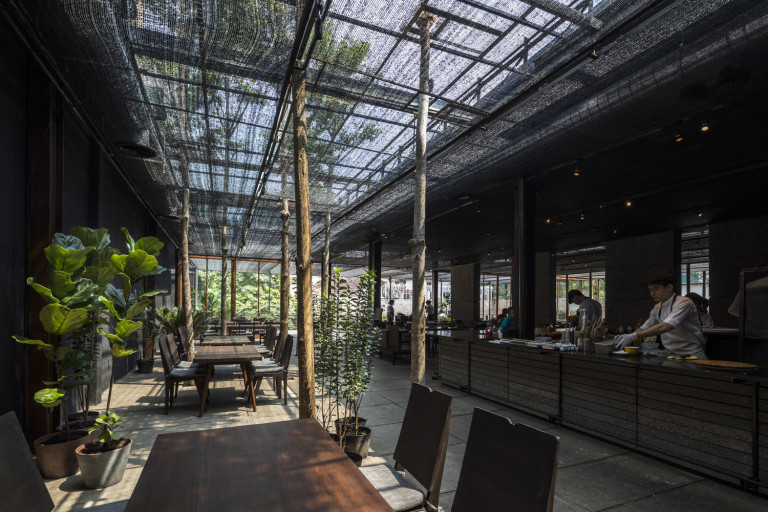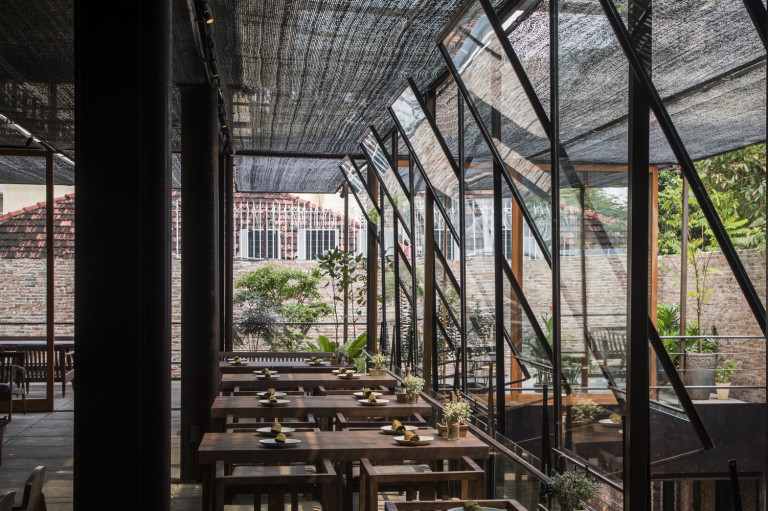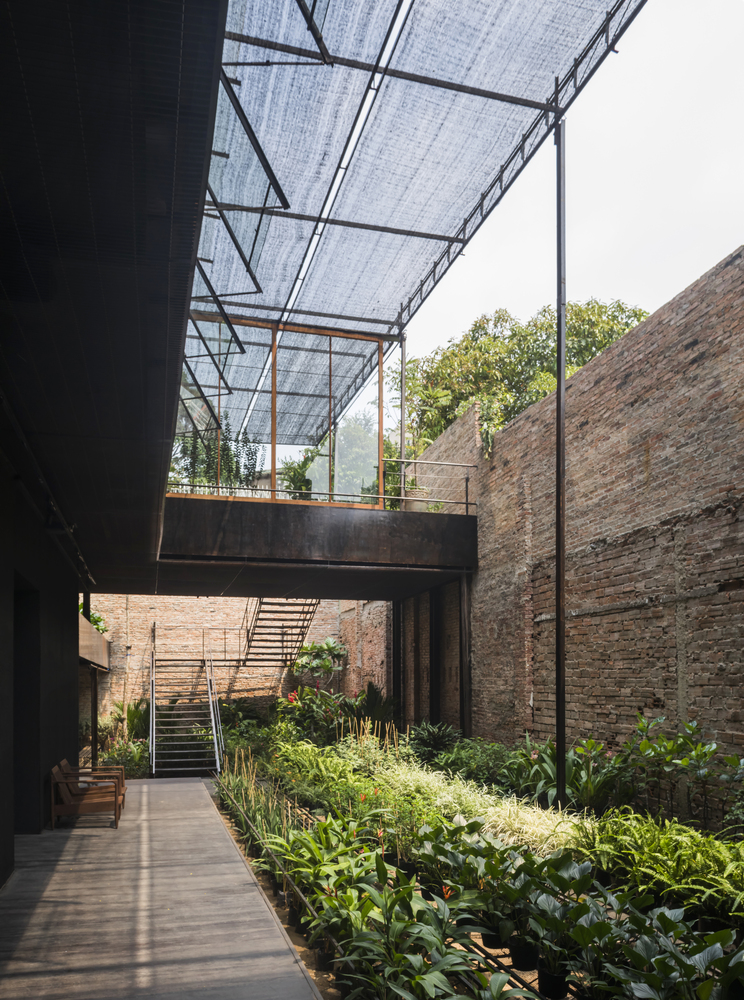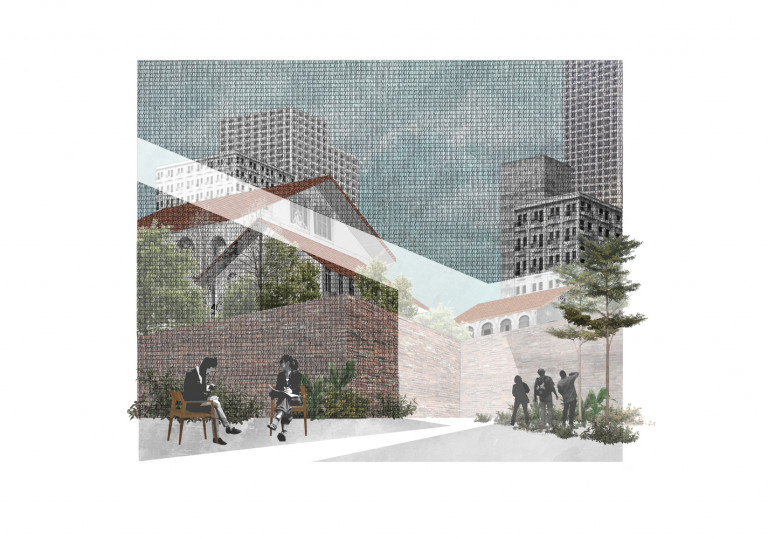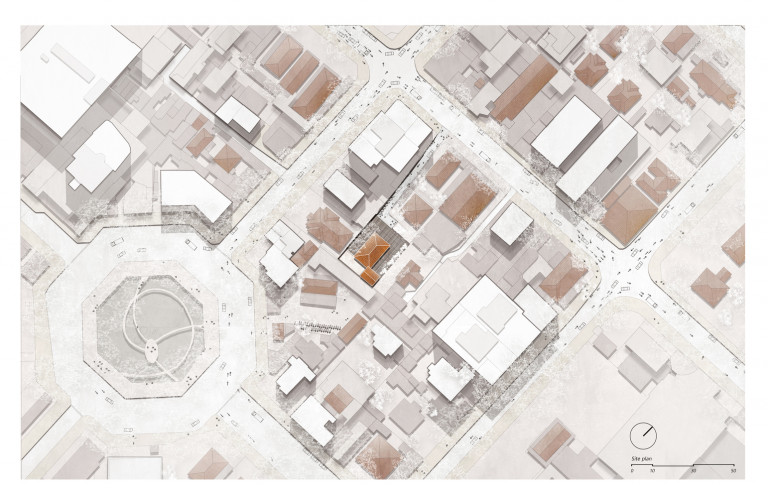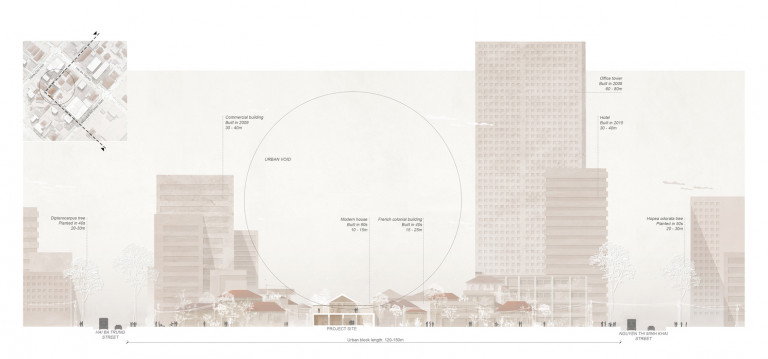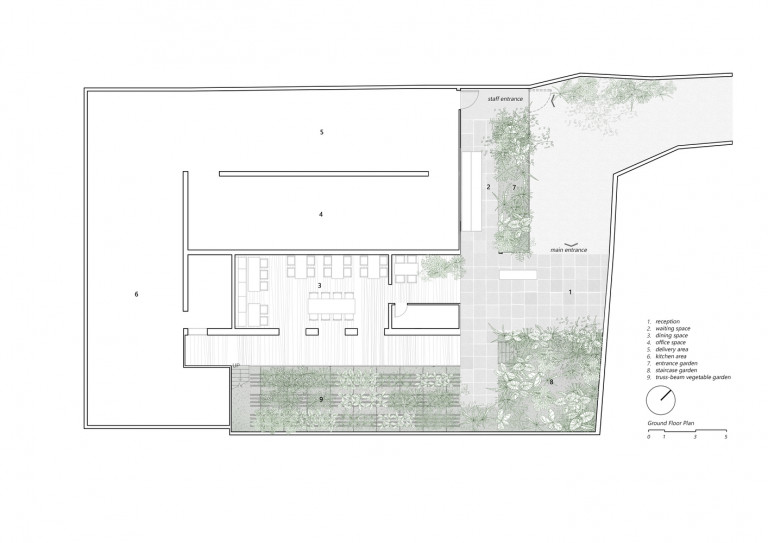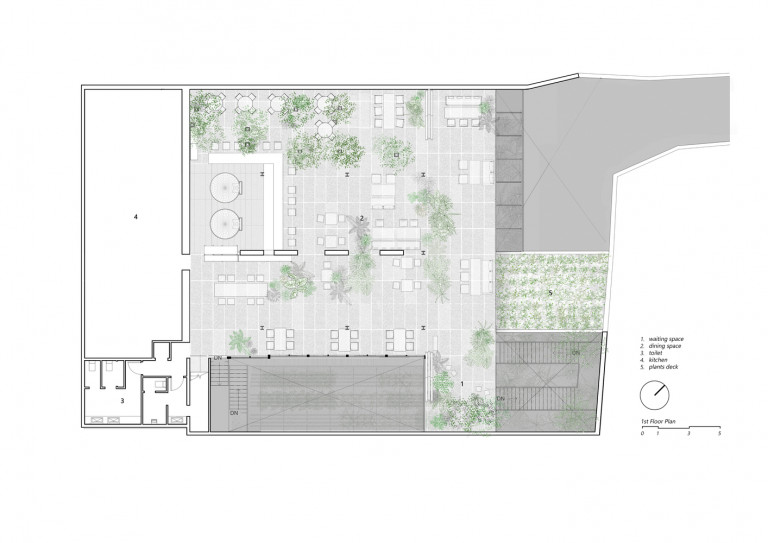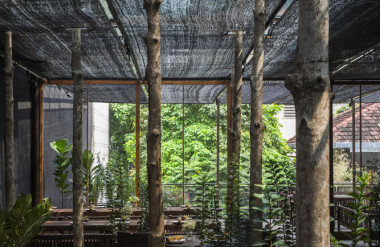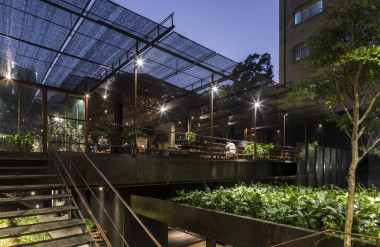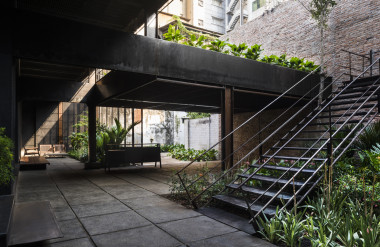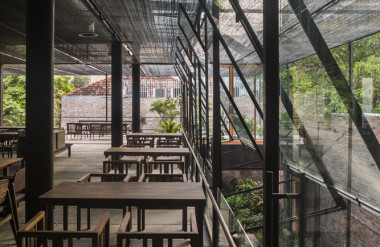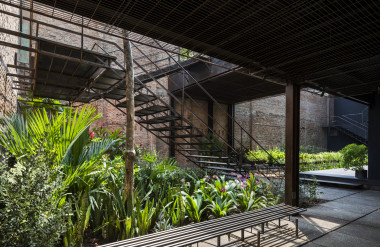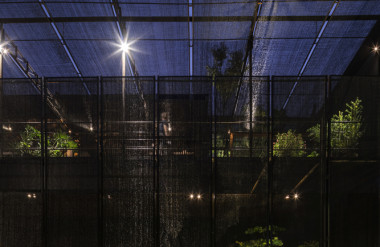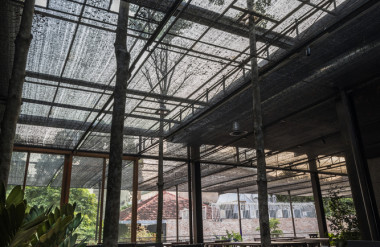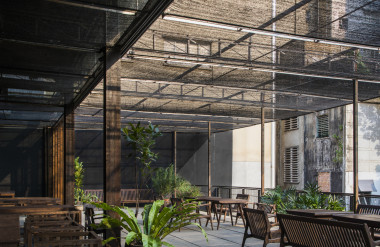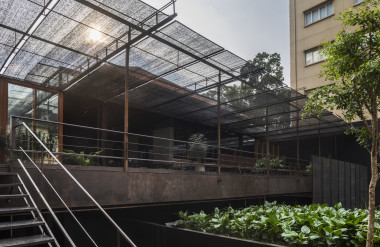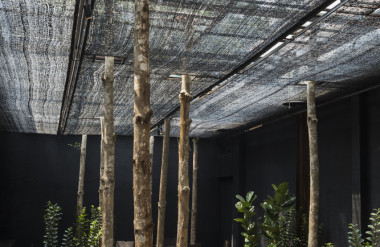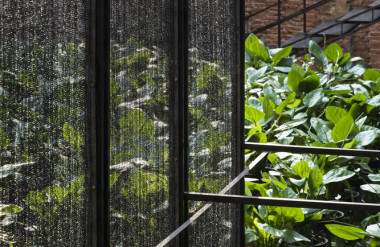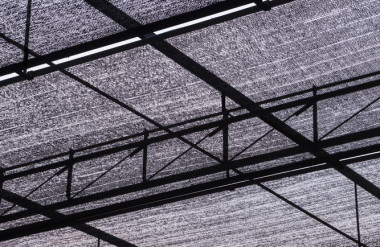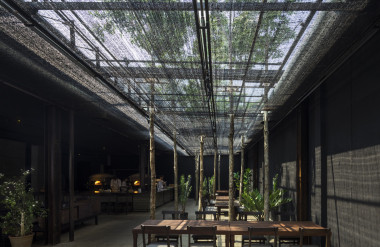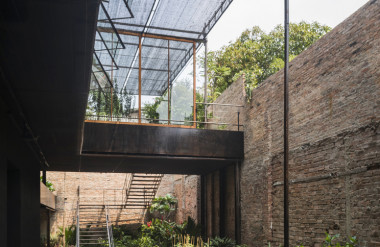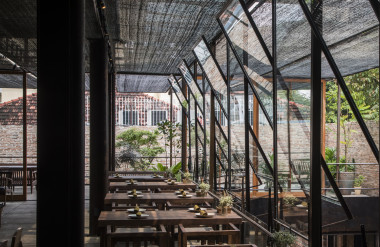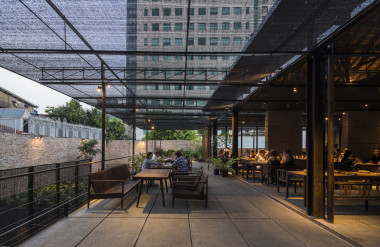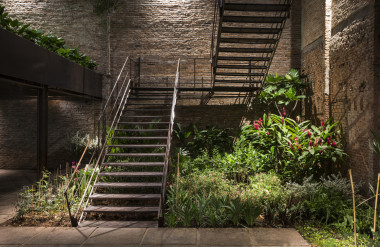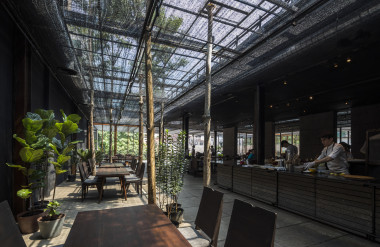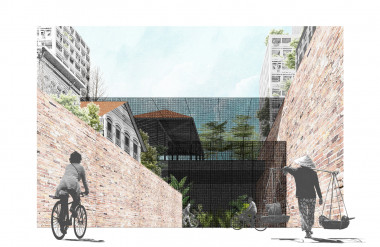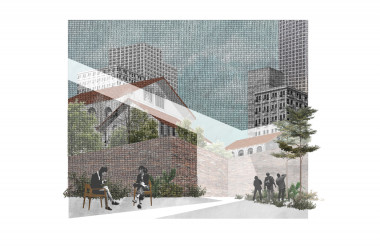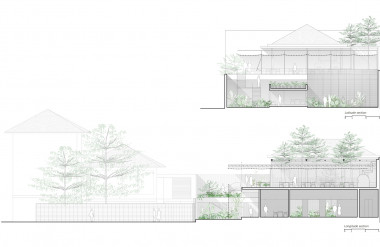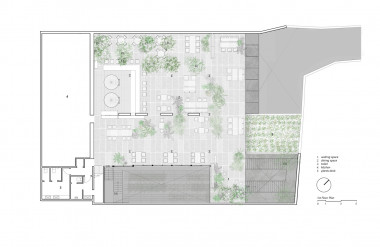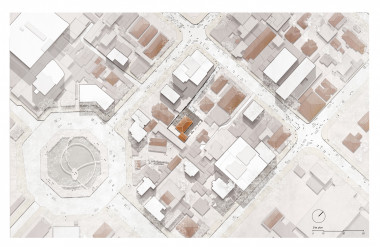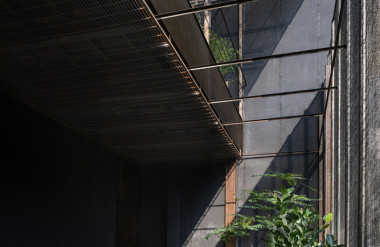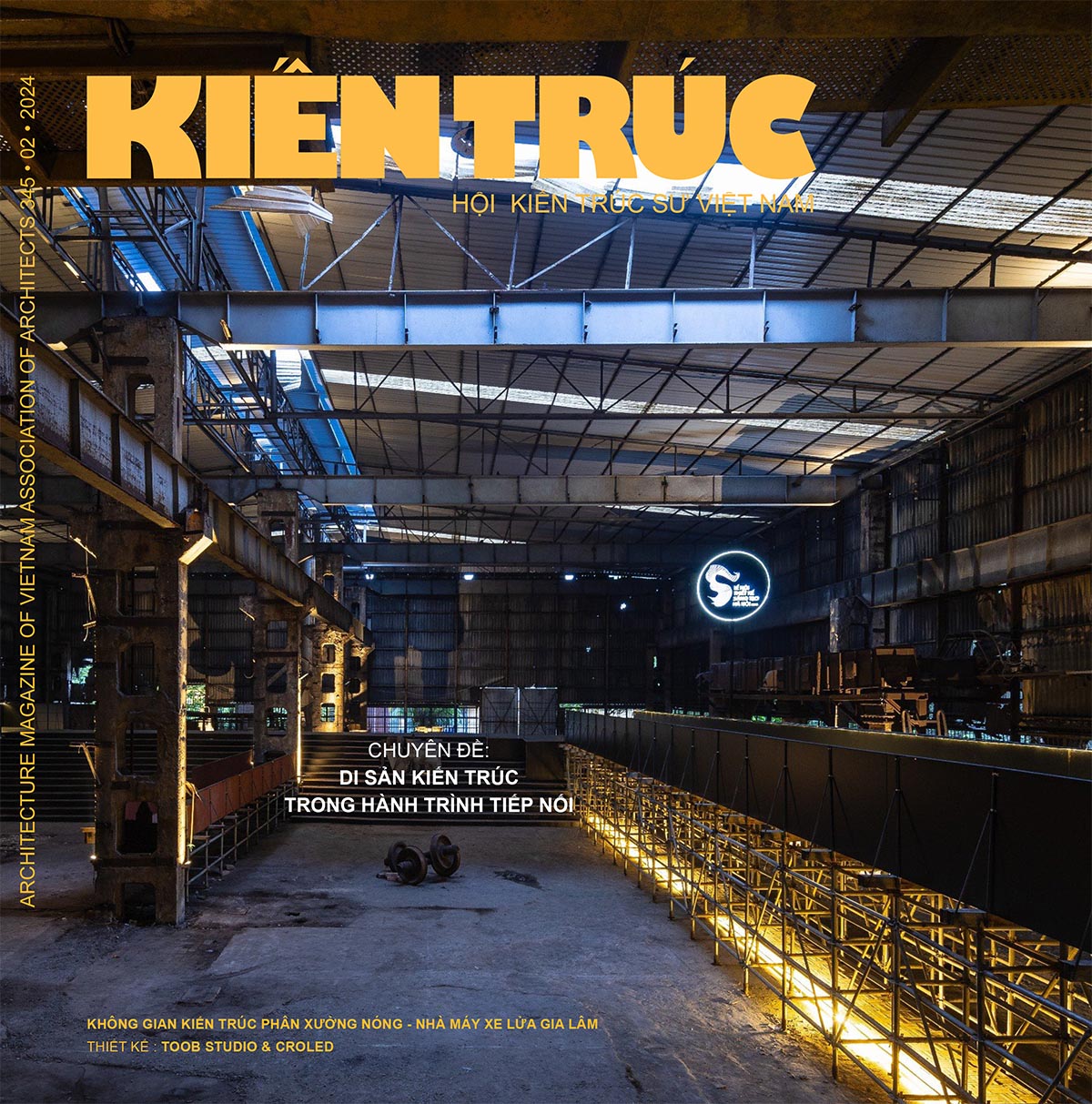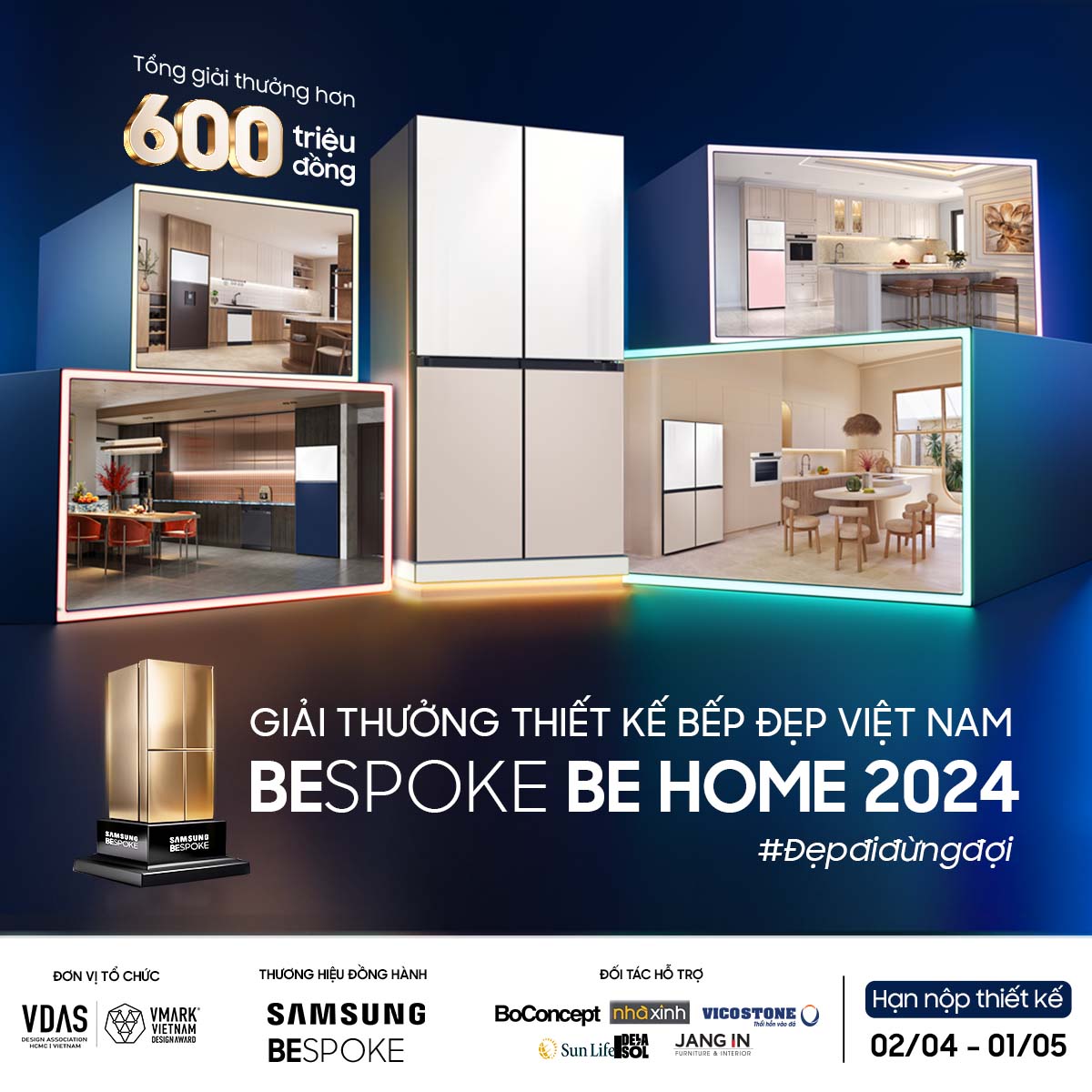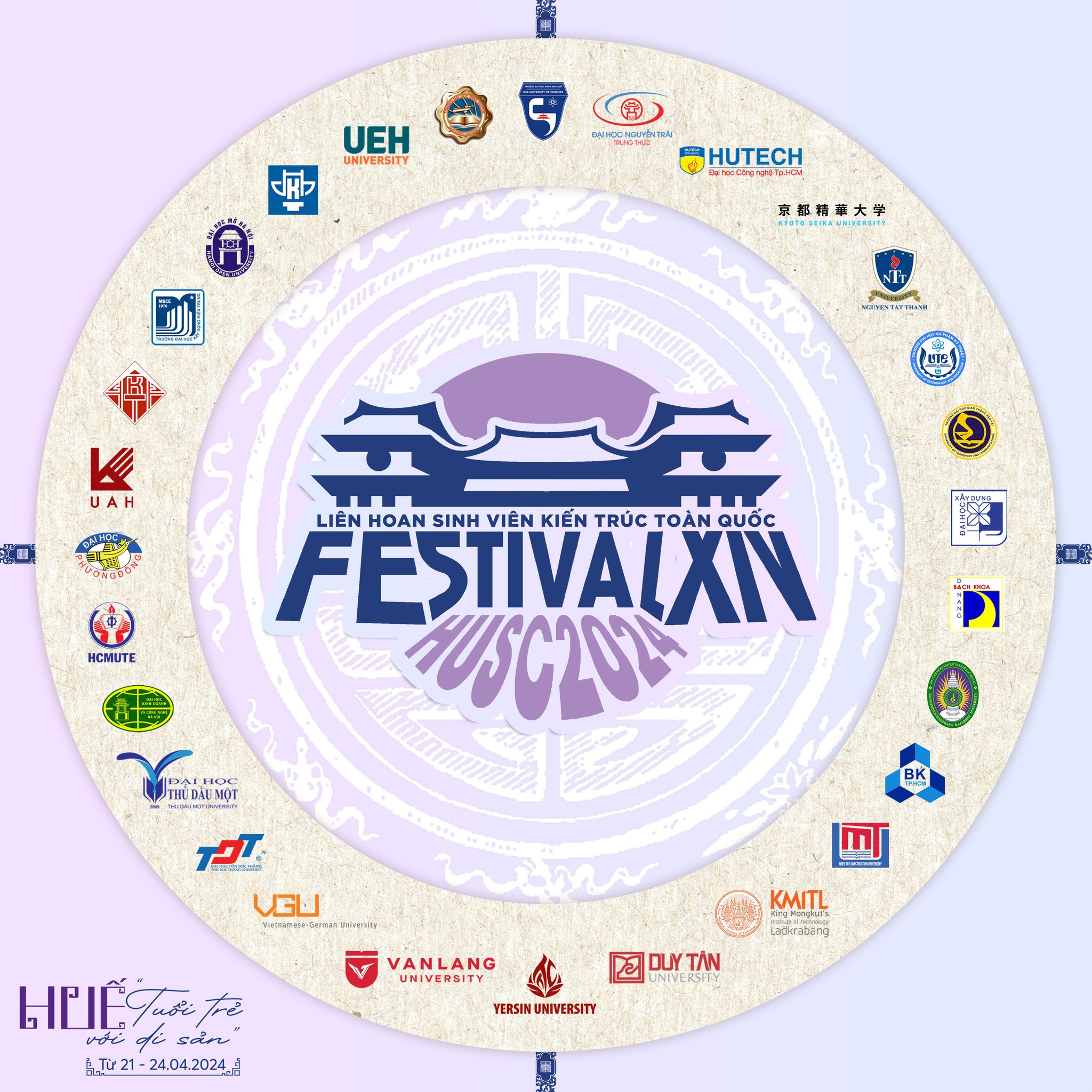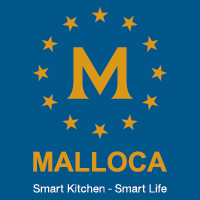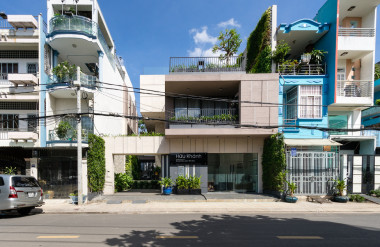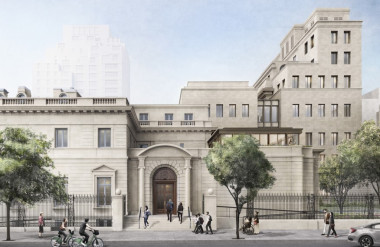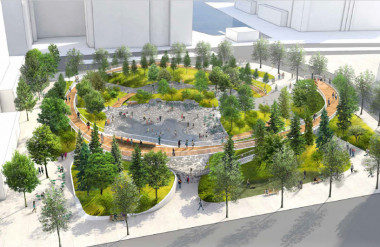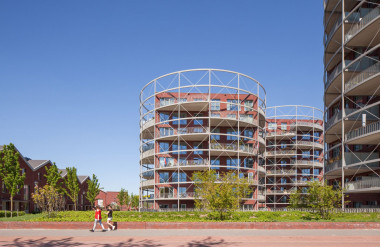Here, the tropical sunlight is so intense that we primarily recognize it as a physical hindrance, like the rain or the wind, before we consider it as an abstract existence in architecture. You can easily imagine its harshness when you see most of the people outside wearing, even in the hottest season, coats and multiple layers of clothes to protect themselves from the sun’s strong rays. If you look around the city’s streets, you can also note they are full of add-ons purposefully arranged to create shades: observe the outdoor parking areas, the street-cafes, the flower shops or the play-yards in schools… Indeed, under such a heavy sunlight, it is as natural to seek and generate shadows as to have umbrellas and raincoats under rainy conditions.
An agricultural net. Made from polyethylene, it was initially developed for agricultural purposes, to soften the direct sunlight and raise foliage plants, shade-loving plants, grafted plants and seedlings more efficiently. However, with its extremely competitive price (less than 100 USD per roll of 2.5 m × 100 m), this agricultural equipment quickly made its way through all the scenes of people’s daily lives in Vietnam. Inspired by the vernacular uses, we sought with this project to define a new typology of tropical architecture: playing with this ordinary material, we used shades, shadows, and lights to compose space.
In the center of Ho Chi Minh City, the project is located in a city block’s basin created by middle/high-rise commercial buildings surrounding its four sides. Ahem, a narrow alley, connects it back to the main street. On the site, from the 2F terrace of the existing building, we can appreciate the peaceful roof-scape of old French style villas in front and the 7-10 stories commercial buildings or 25-30 stories high-rise hotels all around. This view indicates we are in a “void volume” left untouched by commercialization; an ordinary scene for local people, as a backside structure of the rapid urban development. Since the city block is around 120 meters long, the basin (50-60 meters on each side) is in-between the urban and architectural scales.
At the same time, conditioned by its openness and marginality, this empty volume appears as a generous by-product of the urban development. It reminds us of the “rooftop”: both a transitional element in-between the building and the city, and space still spared by efficiency objectives. To integrate this incidental overhead “void” to the project’s premises, we installed the agricultural net mentioned earlier above the entire site. The half-transparent black screen is not only used as a device that creates a sensitive shadow below, but also as a light top-window that softens the glare of a too bright sky and scenery.
Some elements such as the timber truss of the existing roof or the crown part of the garden trees, set above the new half-transparent roof, thus belong to the outer side. They can interact with the surrounding villas and commercial buildings to project images of the urban landscape on the agricultural net. In the inner side, the entire space, including the indoors, the terrace, and the garden, all linked by plenty of various foliage trees arranged around like restaurant furniture, fits snugly under the net. Yes, finally, we intended to create a generous environment of tropical where humans and plants, indoor and outdoor, building-interior and urban-landscape all mingled… under one large shade.
Project information:
Architects: NISHIZAWAARCHITECTS
Location: District 3, Ho Chi Minh City, Vietnam
Architects in Charge: Shunri Nishizawa, Vũ Ngọc Tâm Nhi
Design Team: Đinh Tất Đạt
Area: 1375.0 m2
Project Year: 2018
Photographs: Hiroyuki Oki
Manufacturers: Lixil Corporation, Signify, Toto
(Soure: Archdaily)


